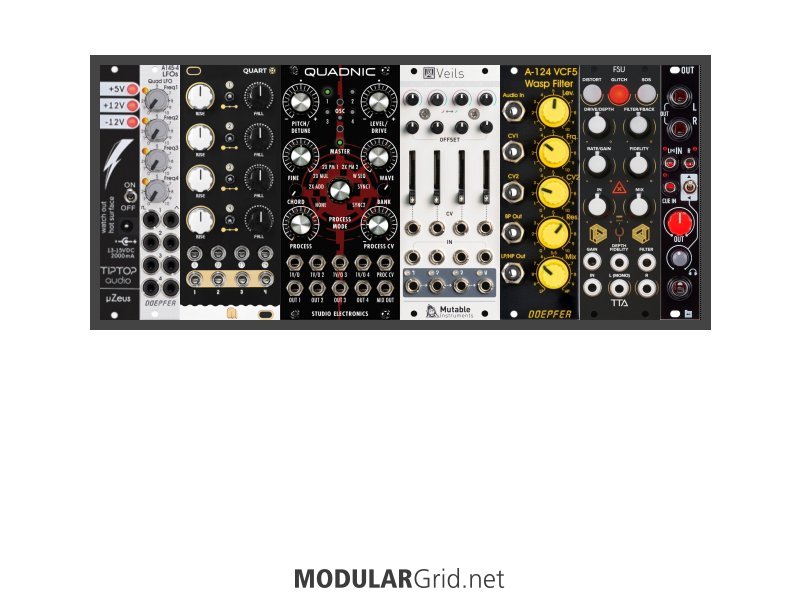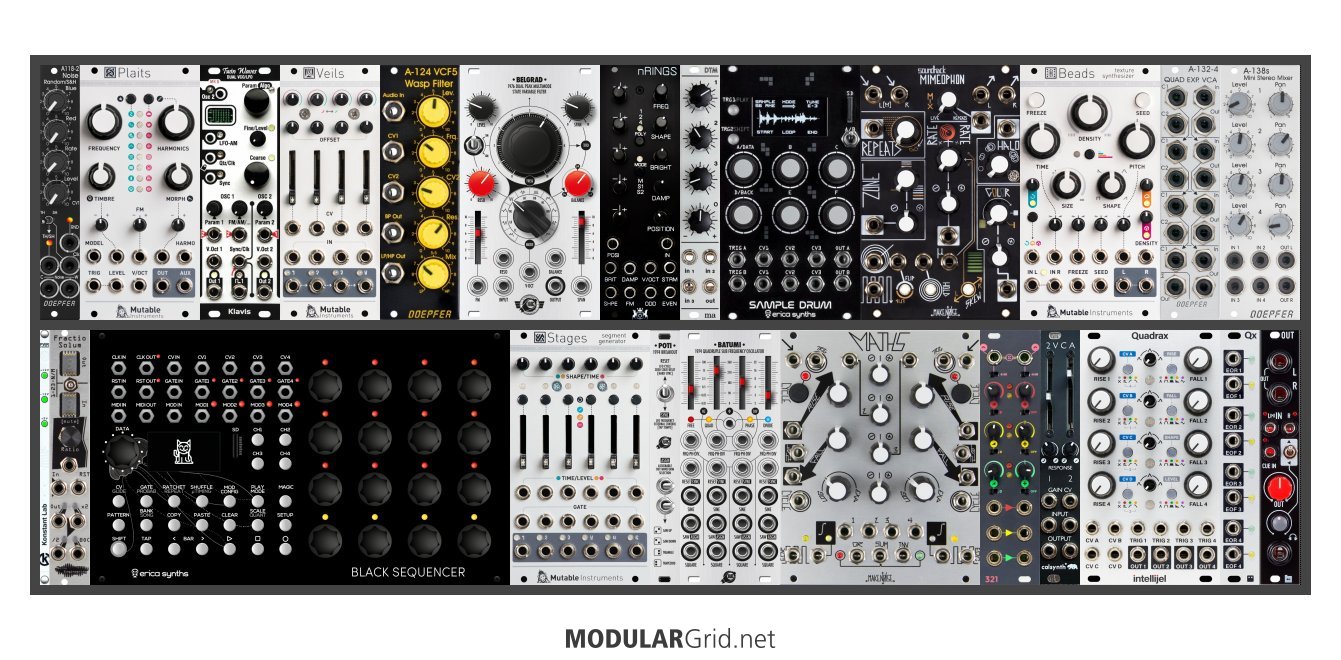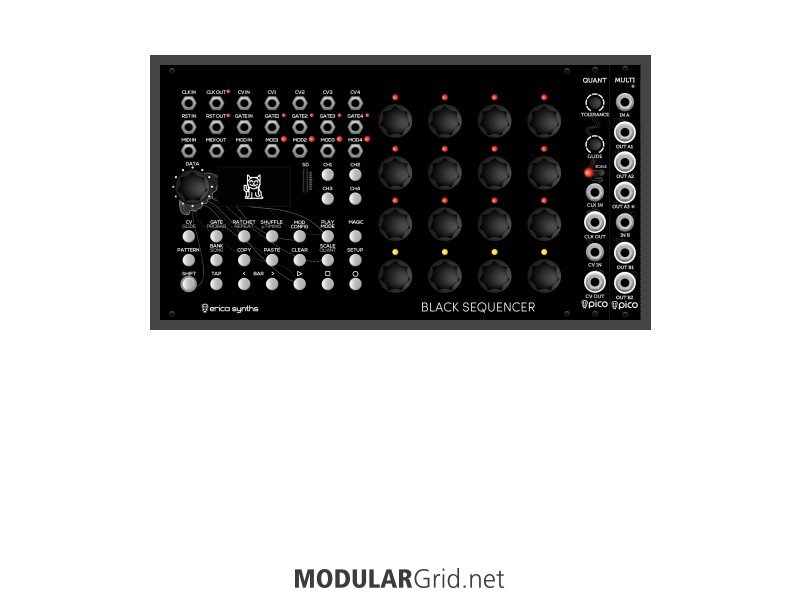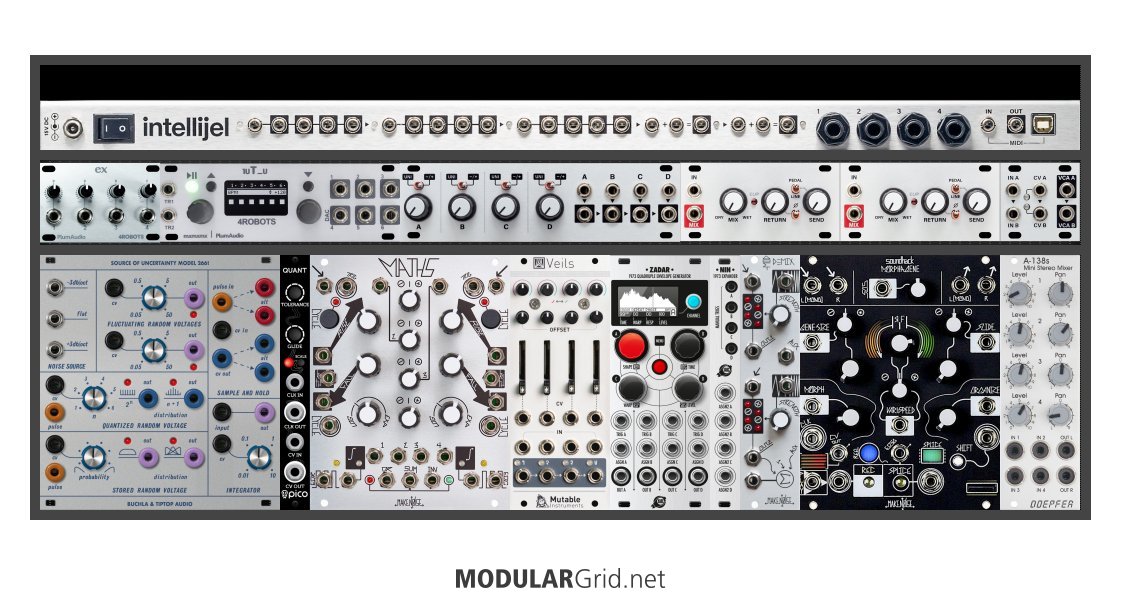Wheee...OK, I went over Jim's remarks as well as some of my own ideas, and arrived at:
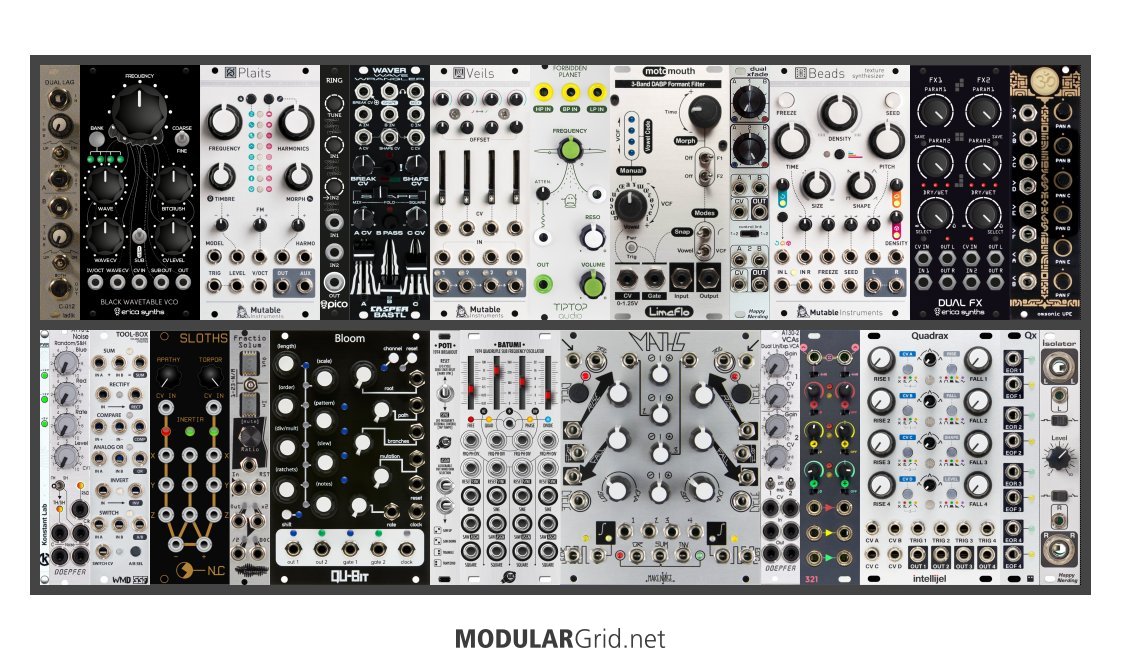
This is fairly similar in places to the original build, but by being more economical with panel space while not losing much in the way of original functionality, I've managed to cram MORE in without making the build an unusable mess by not using teensy-weensy controls.
TOP: Ladik Dual Precision Slew is first, which allows you to use portamento on your VCOs, with portamento on up, down, or both selectable separately. Black Wavetable's next, then a real Plaits, and then an Erica PICO ring modulator with an internal carrier oscillator. After this, the Wave went back in, as it fits in SO nicely as a summer/wavefolder that can either go post-VCO or post-VCAs. Then a Veils for amplitude control over your audio sources. I kept the Forbidden Planet because...well, Nyle's VCF there is a killer lead filter. And after that is something VERY weird and dronable...a Limaflo Motomouth morphing vocal formant filter. That allows you to impose different formant structures onto an incoming signal, with a result that can go from choir-like to downright weird depending on how you approach it. Dual XFade then allows you to crossfade between any of that, and then it feeds Beads and/or an Erica Dual FX. The last module there is an omsonic "Panning Expander", which is really a fixed-level mixer (six in, two out) for signal panning and finishes up the "stereoization" at the right end of the audio path.
BOTTOM: Konstant Labs PWRchekr, natch. If you've got 1 stray hp, that should be the immediate choice unless your cab has DC rail indicators already. Then I dropped in a noise/random source with S&H and T&H capabilities, followed by the Tool Box. Sloths is next, then a CVable clock divider/multiplier from Noise Engineering. So, with this being the logical place for the sequencer, there's the Bloom. Following this, we get into the main modulation devices: Batumi/Poti and Maths, then a Doepfer dual VCA followed by Frap's 321; this little VCA/CV mixer section is for manipulating/altering your modulation signals to create more complex modulation schema coming out of the bottom row. On the other side of this is a Quadrax/Qx combo. Then conveniently located below the omsonic panning mixer, you'll find a Happy Nerding Isolator, which not only functions as a stereo 1/4" audio out, it uses transformer isolation...so you can hit it a little hotter, and the transformers will warm things up a tad due to saturation.
So, this probably eliminates some of your existing modules that you'd mentioned...but it IS a more controllable build that actually has more capability than the original.


